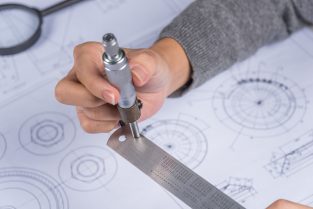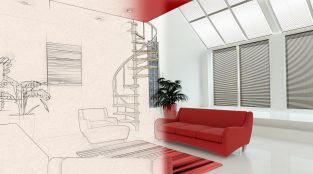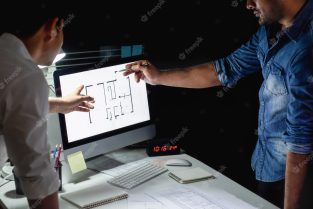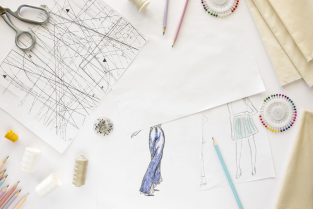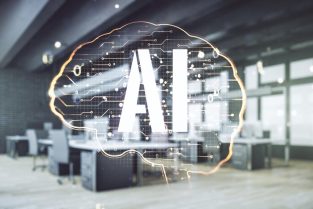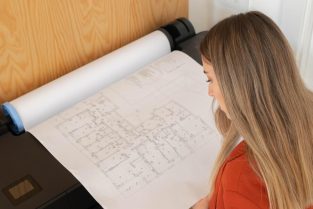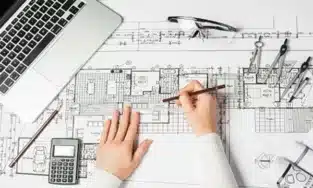Mechanical CAD (Computer-Aided Design) drafting involves using specific software to create a detailed technical design of mechanical components and systems. These technical drawings focus on dimension precision, geometric details, annotation, and other required details in manufacturing and assembly.
Using Mechanical CAD drafting software, designers and engineers can create, alter, and dissect designs virtually before drafting the physical prototype or manufacturing the parts. In this way, they can enhance the design in terms of functionality, manufacturability, and budget-friendliness.
Tools involve in Mechanical CAD Drafting
Throughout the whole designing process, Mechanical CAD Drafting helps the designers with its various precisely crafted tools and features. Have a look-
- 2D Drafting Tools: to create and edit descriptive 2D drawings of the mechanical parts and system.
- 3D Modeling Tools: to produce and module 3D model of the mechanical parts and system for better visualization and counterfeiting.
- Simulation and Analysis Tools: to test and amend the designs regarding stress, strain, and fluid flow.
- Collaboration Tools: to make the designers and engineers collaborate for work on projects, no matter where they are working from.
Mechanical CAD (computer-aided design) drafting employs specialist software to generate precise and comprehensive technical drawings of mechanical objects.
Though it may not seem as innovative as many technologies. However, it has significance when it comes to innovative processes.
Innovation through Mechanical CAD
The following are how Mechanical CAD (computer-aided design) can be used to generate innovation:
Iterative Design: Mechanical CAD drafting enables engineers and designers to draw and mould a descriptive design of mechanical objects in less time. It also helps in the design process where the designers get to verify and magnify their ideas which helps them grasp a highly innovative and exquisite design.
Collaboration: Not only in designing but Mechanical CAD drafting takes care of other aspects as well. It helps engineers and designers collaborate in real-time, irrespective of their localities.
Simulation and Analysis: The simulation and analysis tool of Mechanical CAD drafting enables the engineer to check and verify the design on virtual media beforehand. Doing this helps them tackle and resolve any major or minor issues in design before the physical prototype is generated. This step helps in getting a highly innovative and trustable design.
Embedded with other technologies: Mechanical CAD drafting is also leveraged with other significant technologies, for instance, 3D printing and virtual reality. These advanced technologies pave the way to generating a more innovative and intriguing design experience.
What are Mechanical CAD drafting Services?
Mechanical CAD drafting service provides services related to drawing and design for mechanical components and systems with the help of precise software. It is a service specially offered by designers and engineering firms. However, freelancers who master Mechanical CAD drafting also provide the service.
Mechanical CAD drafting has vivid kind of activities as a service to provide. These are:
- Generating 2D and 3D technical drawings of the mechanical parts and systems that inculcate descriptive annotations and specifications.
- Generating a 3D model of the mechanical parts and systems that benefit from visualization and simulation.
- Examining and enhancing the designs regarding manufacturability, operability, and budget-friendliness.
- Enabling a quick simulation and examination of the design to make it precise regarding stress, strain, and fluid flow.
- Collaborative work of the engineers and designers working in different times and spaces to meet every specification and requirement of the project’s final product.
Mechanical CAD drafting services are available in various fields, namely automotive, aerospace, and manufacturing. These services help in places where precision and accuracy are significant. For projects where the physical prototype and its test are time-taking and expensive, and no errors are affordable, this service works as a boon to designers and engineers.
Conclusion
To conclude, mechanical CAD drafting services are invaluable for businesses and individuals looking for a top-notch design service for producing their mechanical parts and systems.
What is mechanical drafting drawing?
Mechanical drafting drawing, often simply referred to as mechanical drafting or technical drawing, is a discipline of creating detailed visual representations of mechanical and technical components, machines, structures, and systems. These drawings are typically created by engineers, drafters, and designers to communicate design ideas, specifications, and instructions to manufacturers, contractors, and other stakeholders involved in the production or construction process.
Mechanical drafting drawings utilize standardized symbols, lines, and notations to accurately convey dimensions, materials, tolerances, and other important details. These drawings can range from simple sketches to highly detailed and precise technical illustrations, depending on the complexity of the object being depicted and the requirements of the project.
Common types of mechanical drafting drawings include:
Orthographic Drawings: These are 2D representations of an object from multiple views (e.g., top, front, side) to provide a comprehensive understanding of its shape and dimensions.
Isometric Drawings: These are 3D representations of an object where all three dimensions are equally foreshortened, resulting in a distorted yet visually informative view.
Exploded Views: These drawings show how individual components of an assembly fit together by separating them spatially while still maintaining their relative positions.
Assembly Drawings: These depict how various parts come together to form a complete product or system, often including detailed instructions for assembly.
Detail Drawings: These focus on specific components or parts of a larger assembly, providing detailed information about their design, dimensions, and materials.
What is in a structural drawing?
Structural drawings are a vital component of construction documentation, providing detailed information about the structural elements of a building or infrastructure project. These drawings typically include:
Foundation Plans: These show the layout and dimensions of the building’s foundation, including footings, piles, or other support structures.
Floor Framing Plans: These illustrate the structural framework of each floor, including beams, joists, and columns.
Roof Framing Plans: Similar to floor framing plans but for the roof structure, showing rafters, trusses, and other components.
Wall Sections: These drawings provide cross-sectional views of walls, indicating the materials used and how they are assembled, including any reinforcements such as steel or concrete.
Column and Beam Details: Detailed drawings of columns and beams, showing dimensions, reinforcement details, and connection methods.
Structural Notes and Specifications: These provide important information such as material specifications, load capacities, and construction standards.
Reinforcement and Steel Detailing: Detailing of reinforcement bars in concrete elements, including sizes, spacing, and placement, as well as steel connections.
Staircase and Elevator Shaft Details: Drawings showing the structural elements of stairs and elevator shafts, including supports and connections.
Bracing and Shear Wall Details: Details of bracing systems and shear walls used to provide stability and resist lateral forces such as wind or seismic loads.
Miscellaneous Details: Other structural elements such as retaining walls, canopies, or special structural features unique to the project.
